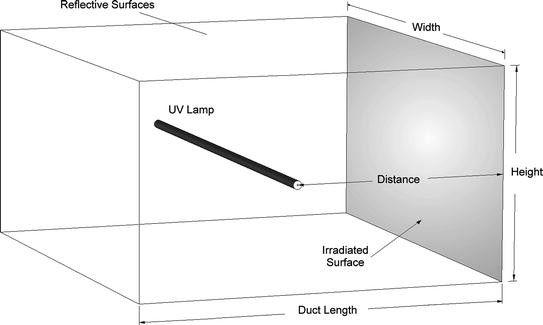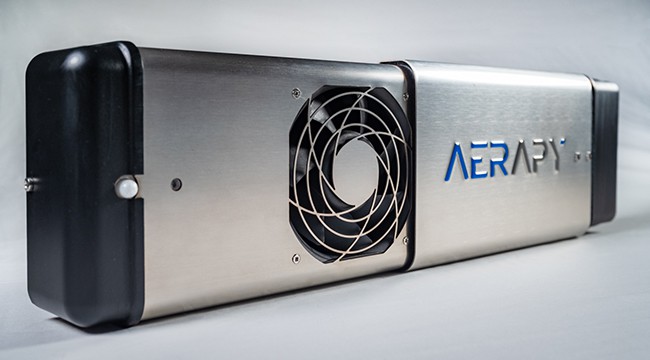Future-Proofing Your Room: Incorporating UV Surface Disinfection for Ongoing Protection
Future-Proofing Your Room: Incorporating UV Surface Disinfection for Ongoing Protection
Blog Article
UV Disinfection: The Cutting-Edge Technology Transforming Hygiene Practices
In the realm of hygiene techniques, one modern technology has actually arised as a game-changer: UV sanitation. From healthcare setups to food processing, UV disinfection is making its mark in different industries.
How UV Sanitation Functions
UV disinfection functions by making use of ultraviolet light to damage or suspend microbes, providing a chemical-free and highly effective method of cleanliness. This technology utilizes the power of short-wavelength UV-C light, which is qualified of damaging the DNA and RNA of microorganisms, therefore making them unable to recreate and cause damage.
The procedure starts with the installment of UV sanitation systems, which include UV lamps that send out UV-C light. These lights are strategically placed in areas where microbial contamination is a concern, such as water treatment plants, health centers, research laboratories, and food handling centers.
When microbes are subjected to UV-C light, the photons permeate their cell walls and get to the DNA and RNA within. The high-energy UV-C photons interrupt the genetic product by producing bonds in between adjacent nucleotides, bring about the formation of thymine dimers. These dimers prevent the microorganisms from reproducing, providing them safe.
UV disinfection is highly efficient against a wide variety of microbes, consisting of germs, viruses, and bloodsuckers. It is specifically effective against waterborne pathogens like E. coli, Giardia, and Cryptosporidium. In addition, UV disinfection is a chemical-free approach, getting rid of the need for potentially harmful anti-bacterials and lowering the risk of unsafe disinfection spin-offs.
Advantages of UV Disinfection
UV disinfection uses various advantages in the area of sanitation, making it a highly favored method for efficiently eliminating harmful microorganisms. Unlike typical sanitation approaches that count on chemicals, UV disinfection uses ultraviolet light to destroy the DNA of microbes, making them not able to replicate and cause infections.
UV sanitation is additionally highly versatile in its applications. It can be used in different setups, including health centers, schools, food processing centers, and water treatment plants. UV sanitation systems can be quickly integrated into existing cleanliness practices, giving an added layer of defense against infectious conditions.
Along with its effectiveness and versatility, UV sanitation is also environmentally pleasant. It does not create any dangerous by-products or residues, making it a secure and lasting technique for cleanliness - uv surface disinfection. In addition, UV sanitation needs marginal maintenance and has a long life expectancy, resulting in cost savings over time.
UV Disinfection in Medical Care Setups
In medical care settings, UV disinfection has actually emerged as a groundbreaking method for effectively removing damaging microorganisms. UV sanitation functions by releasing ultraviolet light at a details wavelength that is deadly to bacteria, infections, and other microbes.
To start with, UV disinfection is a non-chemical method, making it an eco-friendly option compared to typical sanitation approaches that usually include the usage of harsh chemicals. The usage of UV light removes the demand for chemical anti-bacterials, minimizing the risk of hazardous deposit or chemical exposure to both clients and healthcare workers.
Additionally, UV sanitation is extremely reliable in eliminating a large range of bacteria, consisting of drug-resistant microorganisms such as MRSA and C. difficile. It gives a dependable and constant sanitation procedure, ensuring that all surface areas and equipment are thoroughly sanitized, even in hard-to-reach areas.

UV Disinfection in Food Processing
The application of UV sanitation prolongs past healthcare setups and finds considerable value in the realm of food processing. uv surface disinfection. UV disinfection modern technology is coming to be progressively preferred in the food sector as a result of its capability to properly get rid of damaging pathogens and enhance food security
One of the primary advantages of UV sanitation in food handling is its capacity to target a variety of microbes, including bacteria, viruses, and molds. By utilizing UV light at particular wavelengths, it is feasible to interrupt the DNA and RNA of these microorganisms, making them incapable to cause or reproduce harm. This next modern technology can be put on different phases of the food processing chain, including surface sanitation, equipment sanitation, and water therapy.
UV sanitation offers a non-thermal and chemical-free method of sterilizing foodstuff. Unlike traditional disinfection approaches that count on chemicals or heat, UV modern technology does not leave any type of residue or modify the preference, texture, or nutritional value of the food. This makes it an optimal solution for sectors that call for rigorous adherence to high quality standards.
Furthermore, UV sanitation systems are very easy to mount and run, requiring very little upkeep. They can be integrated into existing handling lines without causing significant interruptions to the manufacturing procedure. Additionally, UV systems have a fast therapy time, enabling click here for more info for constant handling and lowering downtime.
The Future of UV Disinfection

One area where UV sanitation is anticipated to make substantial innovations is in the field of medical care. With the increase of antibiotic-resistant microorganisms and the requirement for extra reliable sanitation techniques, UV light has the prospective to play a vital role in decreasing healthcare-associated infections. UV disinfection systems can be utilized to sanitize surface areas, equipment, and even the air in medical care facilities, assisting to avoid the spread of unsafe pathogens and boost person security.
Another industry that can take advantage of improvements in UV disinfection innovation is the food sector. UV light has already shown to be an effective technique for decontaminating food and minimizing the danger of foodborne health problems. As innovation boosts, we can expect to see much more cost-effective and reliable UV sanitation systems being applied in food processing plants, making certain that the food we eat is safe and devoid of harmful microorganisms.
Verdict
To conclude, UV disinfection is an innovative modern technology that is transforming sanitation practices in healthcare setups and food processing. By utilizing UV light to kill or shut down microorganisms, it supplies various try this web-site advantages such as performance, safety, and efficiency. With recurring improvements in this area, UV sanitation holds wonderful possible for the future of hygiene, supplying a trustworthy and sustainable option for keeping tidy and hygienic settings.
UV sanitation is a chemical-free approach, getting rid of the requirement for possibly harmful anti-bacterials and decreasing the danger of hazardous disinfection spin-offs.
Unlike conventional disinfection methods that count on chemicals, UV sanitation utilizes ultraviolet light to damage the DNA of microorganisms, providing them not able to duplicate and trigger infections. Unlike conventional sanitation methods that rely on chemicals or heat, UV innovation does not leave any type of residue or alter the taste, texture, or dietary worth of the food. As modern technology improves, we can expect to see a lot more cost-effective and effective UV disinfection systems being implemented in food processing plants, making certain that the food we eat is risk-free and cost-free from hazardous bacteria.
In final thought, UV disinfection is a sophisticated innovation that is changing hygiene methods in health care setups and food handling.
Report this page